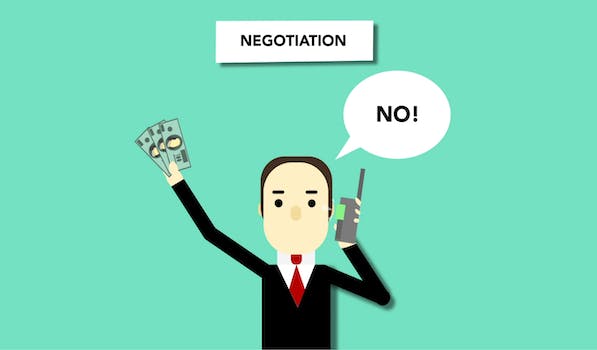How To Start A Business Meeting Sample
“Effective tips for a successful business meeting start.”
Introduction
Starting a business meeting can be a daunting task, especially if you are new to the business world. However, with the right preparation and approach, you can make a great first impression and set the tone for a productive and successful meeting. In this article, we will provide a sample guide on how to start a business meeting, including tips on how to introduce yourself, set an agenda, and engage your audience.
Creating an Effective Agenda for Your Business Meeting Sample
Starting a business meeting can be a daunting task, especially if you are new to the process. However, with a well-planned agenda, you can ensure that your meeting runs smoothly and achieves its objectives. In this article, we will discuss how to create an effective agenda for your business meeting sample.
The first step in creating an effective agenda is to identify the purpose of the meeting. What do you hope to achieve? Is it a brainstorming session, a progress update, or a decision-making meeting? Once you have identified the purpose, you can then determine the topics that need to be discussed.
Next, you should prioritize the topics based on their importance. Start with the most critical issues and work your way down to the less important ones. This will ensure that you have enough time to discuss the critical issues and avoid running out of time.
It is also essential to allocate a specific amount of time for each topic. This will help you stay on track and ensure that you cover all the necessary topics. Be realistic when allocating time, and make sure that you leave enough time for discussion and questions.
Another crucial aspect of creating an effective agenda is to involve the participants. Ask them for their input and suggestions on the topics that need to be discussed. This will help you ensure that everyone’s concerns are addressed and that the meeting is relevant to all participants.
Once you have identified the topics and allocated time, it is time to structure the agenda. Start with a brief introduction that outlines the purpose of the meeting and the topics that will be discussed. This will help set the tone for the meeting and ensure that everyone is on the same page.
Next, list the topics in the order that they will be discussed, along with the allocated time for each topic. Be sure to include any necessary materials or documents that participants need to review before the meeting.
It is also essential to include any action items or decisions that need to be made during the meeting. This will help ensure that everyone is clear on what needs to be done and who is responsible for each task.
Finally, end the agenda with a summary of the meeting and any follow-up actions that need to be taken. This will help ensure that everyone is clear on what was discussed and what needs to be done next.
In conclusion, creating an effective agenda is essential for a successful business meeting. By identifying the purpose, prioritizing topics, allocating time, involving participants, and structuring the agenda, you can ensure that your meeting runs smoothly and achieves its objectives. Remember to be realistic when allocating time, involve participants, and include any necessary materials or documents. With a well-planned agenda, you can ensure that your business meeting sample is productive and achieves its goals.
Tips for Engaging Your Audience During a Business Meeting Sample

Starting a business meeting can be a daunting task, especially if you are not used to public speaking. However, with the right preparation and mindset, you can engage your audience and make your meeting a success. In this article, we will provide you with some tips on how to start a business meeting sample and keep your audience engaged throughout the meeting.
Firstly, it is important to introduce yourself and your team. This will help to establish your credibility and build rapport with your audience. You can start by giving a brief overview of your background and experience, and then introduce your team members one by one. Make sure to highlight their strengths and expertise, and explain how they will contribute to the meeting.
Next, you should set the agenda for the meeting. This will help to keep everyone on track and ensure that you cover all the important topics. You can start by outlining the main objectives of the meeting, and then break down the agenda into smaller sections. Make sure to allocate enough time for each section, and leave some time at the end for questions and feedback.
Once you have set the agenda, it is important to engage your audience right from the start. You can do this by asking them some questions or getting them to participate in a quick activity. For example, you could ask them to introduce themselves and share their expectations for the meeting. This will help to break the ice and create a more relaxed atmosphere.
Another way to engage your audience is to use visual aids such as slides or videos. This will help to illustrate your points and make the meeting more interesting. Make sure to keep the visuals simple and easy to understand, and avoid using too much text or complicated graphics.
During the meeting, it is important to keep the conversation flowing and encourage participation from everyone. You can do this by asking open-ended questions, listening actively to what others have to say, and acknowledging their contributions. Make sure to avoid interrupting or talking over others, and be respectful of different opinions and perspectives.
Finally, it is important to end the meeting on a positive note. You can do this by summarizing the main points and highlighting any action items or next steps. Make sure to thank everyone for their participation and encourage them to follow up if they have any further questions or feedback.
In conclusion, starting a business meeting sample can be a challenging task, but with the right preparation and mindset, you can engage your audience and make your meeting a success. Remember to introduce yourself and your team, set the agenda, engage your audience, use visual aids, encourage participation, and end on a positive note. By following these tips, you can create a productive and engaging meeting that will leave a lasting impression on your audience.
The Importance of Setting Clear Objectives for Your Business Meeting Sample
Starting a business meeting sample can be a daunting task, especially if you are new to the business world. However, with the right preparation and mindset, you can make your meeting a success. One of the most important aspects of starting a business meeting sample is setting clear objectives. In this article, we will discuss the importance of setting clear objectives for your business meeting sample and provide tips on how to do so effectively.
Firstly, setting clear objectives for your business meeting sample is important because it helps to ensure that everyone is on the same page. When you have a clear idea of what you want to achieve from the meeting, you can communicate this to your team members and ensure that they understand what is expected of them. This can help to avoid confusion and misunderstandings, which can lead to wasted time and resources.
Secondly, setting clear objectives for your business meeting sample can help to keep the meeting focused and productive. When you have a clear idea of what you want to achieve, you can structure the meeting in a way that allows you to achieve your objectives efficiently. This can help to prevent the meeting from becoming sidetracked or derailed by irrelevant discussions or tangents.
So, how do you set clear objectives for your business meeting sample? Here are some tips:
1. Identify the purpose of the meeting: Before you start planning your meeting, it is important to identify the purpose of the meeting. What do you want to achieve? Is it to discuss a new project, brainstorm ideas, or make a decision? Once you have identified the purpose of the meeting, you can start to set your objectives.
2. Be specific: When setting your objectives, it is important to be as specific as possible. For example, instead of setting an objective to “discuss the new project,” you could set an objective to “review the project timeline and assign tasks to team members.”
3. Make your objectives measurable: It is important to make your objectives measurable so that you can track your progress and determine whether you have achieved your goals. For example, instead of setting an objective to “improve customer satisfaction,” you could set an objective to “increase customer satisfaction ratings by 10% within the next quarter.”
4. Set realistic objectives: It is important to set objectives that are realistic and achievable. Setting unrealistic objectives can lead to frustration and disappointment, which can be demotivating for your team members.
5. Communicate your objectives: Once you have set your objectives, it is important to communicate them to your team members. This can help to ensure that everyone is on the same page and working towards the same goals.
In conclusion, setting clear objectives for your business meeting sample is essential for ensuring that your meeting is productive and successful. By following the tips outlined in this article, you can set clear objectives that are specific, measurable, realistic, and achievable. Remember to communicate your objectives to your team members and keep them focused on achieving your goals. With the right preparation and mindset, you can make your business meeting sample a success.
How to Follow Up After Your Business Meeting Sample
Starting a business meeting can be nerve-wracking, but following up after the meeting can be just as important. It’s essential to keep the momentum going and ensure that everyone is on the same page. Here are some tips on how to follow up after your business meeting sample.
1. Send a Thank You Email
After the meeting, it’s always a good idea to send a thank you email to all the attendees. This email should be brief and to the point, thanking everyone for their time and summarizing the key points discussed during the meeting. It’s also a good idea to include any action items or next steps that were agreed upon during the meeting.
2. Follow Up on Action Items
If there were any action items assigned during the meeting, it’s important to follow up on them promptly. This shows that you are taking the meeting seriously and that you are committed to moving forward with the agreed-upon plan. You can send a separate email to the person responsible for the action item, asking for an update on their progress.
3. Schedule a Follow-Up Meeting
If there are still unresolved issues or if there are additional topics that need to be discussed, it’s a good idea to schedule a follow-up meeting. This ensures that everyone is on the same page and that progress is being made. When scheduling the meeting, be sure to include all the necessary attendees and provide an agenda so that everyone knows what to expect.
4. Provide Additional Information
If there were any questions or concerns raised during the meeting that require additional information, be sure to provide it promptly. This could be in the form of a follow-up email or a phone call. Providing additional information shows that you are committed to finding a solution and that you are willing to go the extra mile to ensure that everyone is satisfied.
5. Keep the Lines of Communication Open
Following up after a business meeting is not a one-time event. It’s important to keep the lines of communication open and to check in with the attendees periodically to ensure that progress is being made. This could be in the form of a quick email or phone call. Keeping the lines of communication open shows that you are committed to the success of the project and that you are willing to work collaboratively to achieve the desired outcome.
In conclusion, following up after a business meeting is just as important as starting the meeting. It’s essential to keep the momentum going and to ensure that everyone is on the same page. By sending a thank you email, following up on action items, scheduling a follow-up meeting, providing additional information, and keeping the lines of communication open, you can ensure that your business meeting sample is a success. Remember, communication is key, and by working collaboratively, you can achieve great things.
Maximizing Productivity in Your Business Meeting Sample
Starting a business meeting can be a daunting task, especially if you are new to the business world. However, with the right approach, you can make your meetings more productive and efficient. In this article, we will discuss some tips on how to start a business meeting sample that will help you maximize productivity.
Firstly, it is important to have a clear agenda for the meeting. This will help you stay focused and ensure that everyone is on the same page. The agenda should include the purpose of the meeting, the topics to be discussed, and the expected outcomes. You should also send the agenda to all participants before the meeting so that they can prepare accordingly.
Secondly, it is important to start the meeting on time. This shows that you respect everyone’s time and that you are serious about the meeting. If you are the one leading the meeting, make sure you arrive early to set up the room and ensure that everything is in order. If you are waiting for other participants, use this time to review your notes and prepare for the meeting.
Once everyone is present, it is important to introduce yourself and welcome everyone to the meeting. This helps to create a friendly and welcoming atmosphere. You should also introduce any new participants and give a brief overview of the agenda.
Next, it is important to review the agenda and ensure that everyone is clear on what will be discussed. This is also a good time to set some ground rules for the meeting, such as no interruptions or side conversations. You should also encourage everyone to participate and share their ideas.
During the meeting, it is important to stay focused on the agenda and avoid getting sidetracked. If someone brings up a topic that is not on the agenda, politely remind them that it will be discussed at a later time. You should also encourage everyone to stay on topic and avoid going off on tangents.
As the meeting progresses, it is important to take notes and keep track of any action items or decisions that are made. This will help you stay organized and ensure that everyone is clear on what needs to be done after the meeting. You should also assign tasks to specific individuals and set deadlines for completion.
Finally, it is important to end the meeting on a positive note. Thank everyone for their participation and summarize the key points that were discussed. You should also review any action items and ensure that everyone is clear on what needs to be done. If there are any follow-up meetings scheduled, make sure everyone is aware of the date and time.
In conclusion, starting a business meeting sample can be a challenging task, but with the right approach, you can make your meetings more productive and efficient. Remember to have a clear agenda, start on time, introduce yourself and welcome everyone, review the agenda, stay focused on the topics, take notes, assign tasks, and end on a positive note. By following these tips, you can ensure that your meetings are successful and that you achieve your desired outcomes.
Conclusion
In conclusion, starting a business meeting sample requires careful planning and preparation. It is important to set clear objectives, create an agenda, and communicate effectively with all participants. By following these steps, you can ensure that your business meeting is productive and successful.






